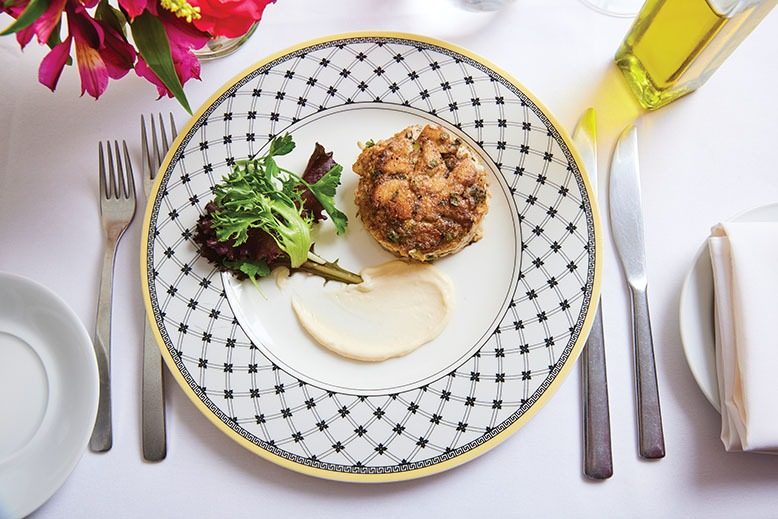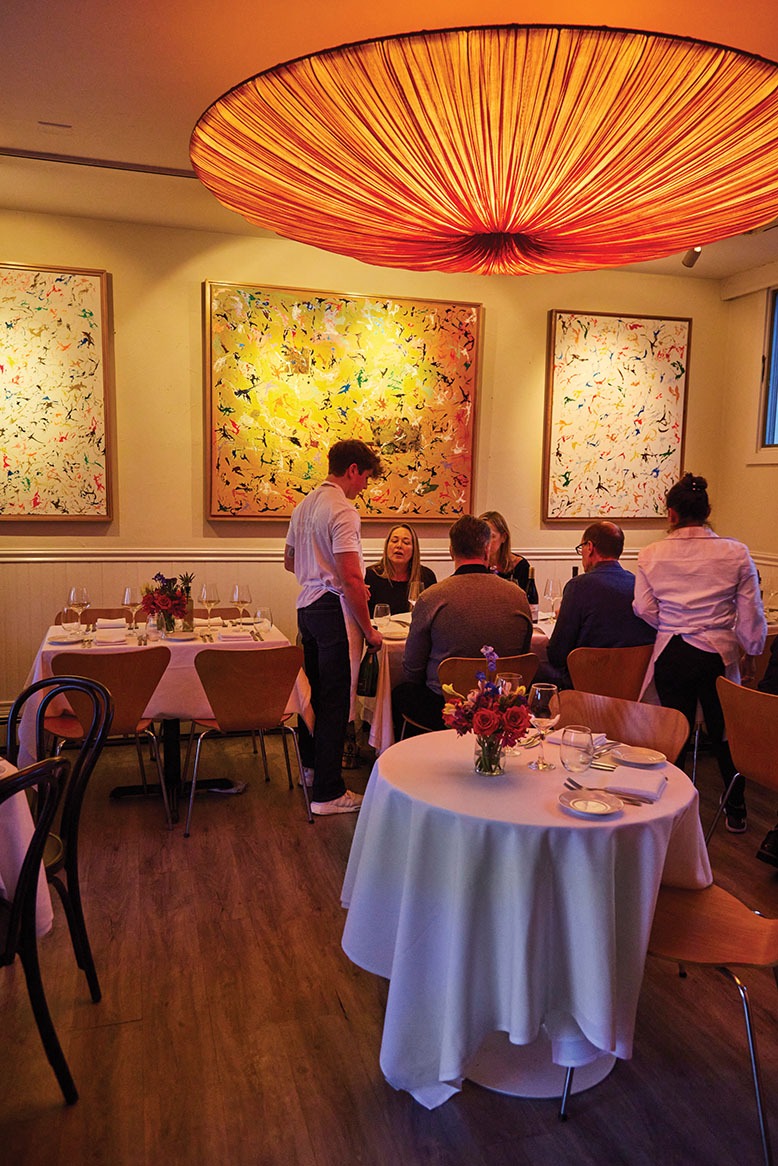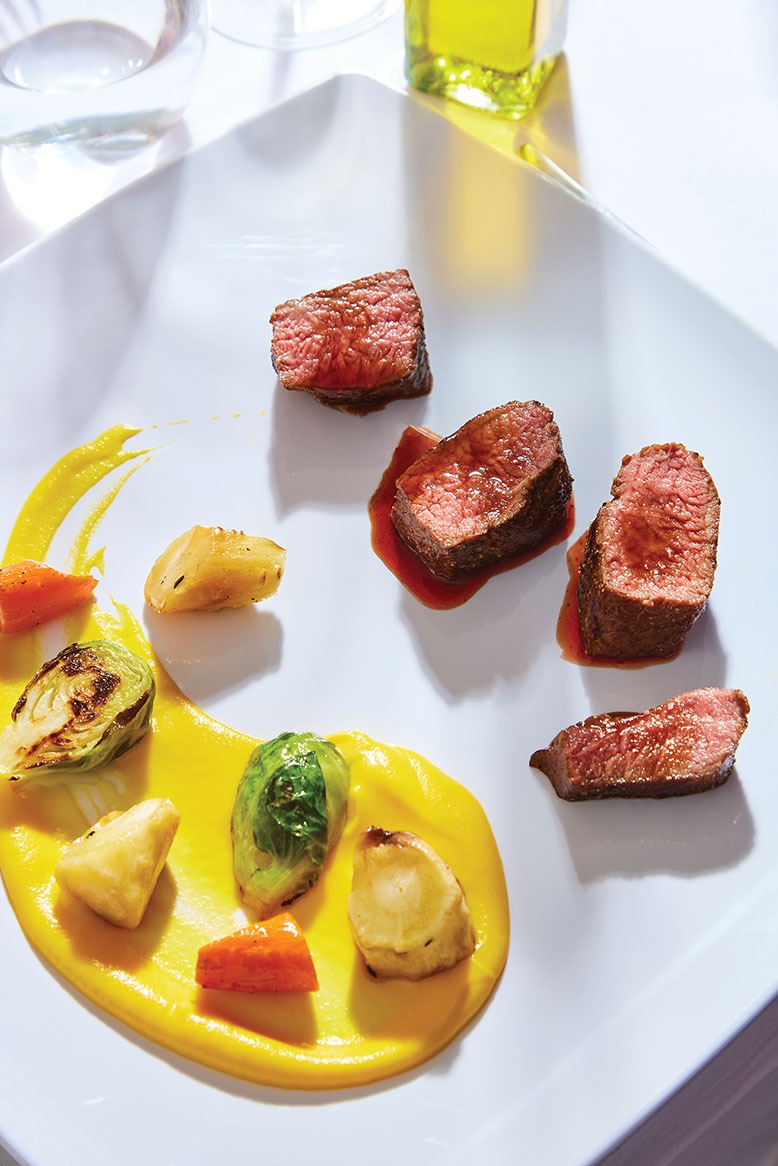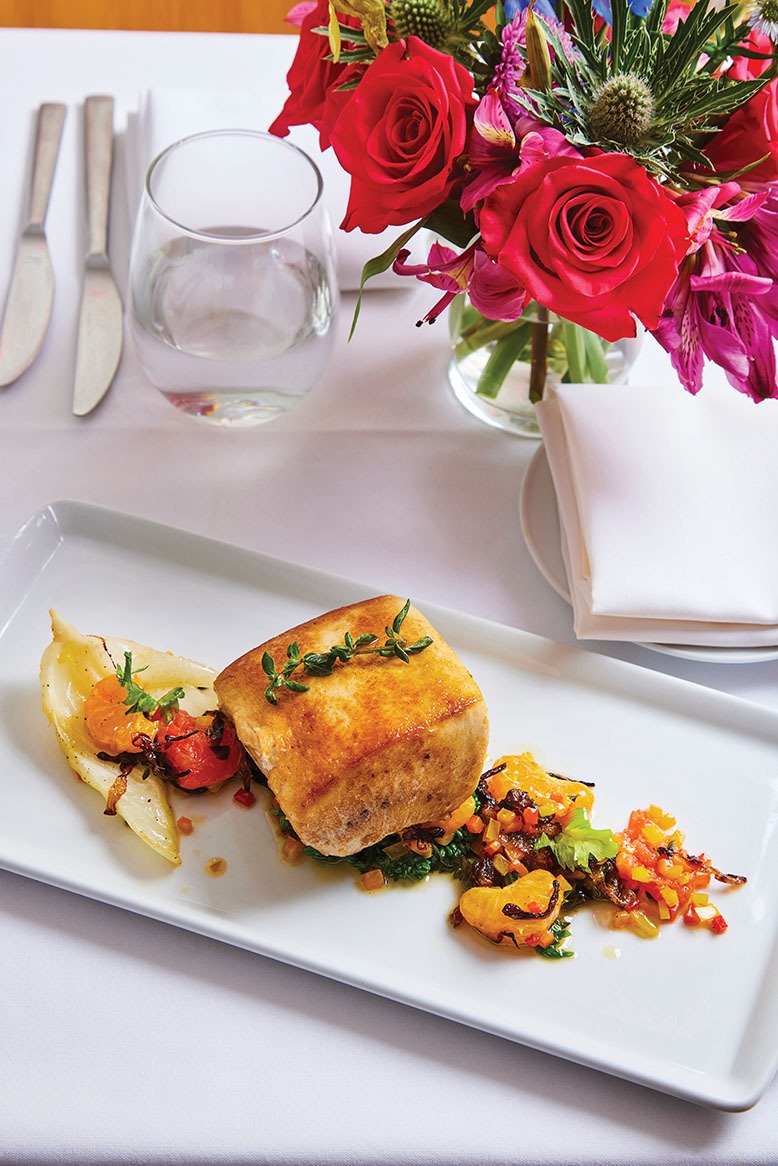



Each morning, Dennis Foy scours the Trenton farmers market and local meat and produce farms to see what’s in season to purchase for the dishes he’s planned for that evening’s service. By 11 am, he’s on deck in the tiny kitchen of d’floret in Lambertville conceptualizing the night’s dishes, and by late afternoon, the show is about to begin. Sometimes referred to as the dean of farm-to-table cooking, Foy has been behind the stove churning out inventive creations for 50 years, the last 12 at this intimate, white-tablecloth spot a couple of blocks from the Delaware River. Foy, who is about to turn 73, doesn’t see himself retiring anytime soon—despite the grueling schedule of cooking every night.
“I’ve never been happier than being in this restaurant; there’s some kind of vortex in this area,” says Foy, who, in addition to a storied career as a chef, has master’s degrees in anthropology and business management, and spends his spare time painting coastal landscapes on huge canvases.
A big part of his happiness is connected to his wife, Estella Quiñones, whom he met 36 years ago at Mondrian, one of a handful of top New York City restaurants where he ruled the kitchen. He’s also cooked at Le Cote Basque and the 21 Club, as well as Tarragon Tree in Chatham. A native New Yorker of Puerto Rican descent, Quiñones runs the front of house at d’floret with warmth and familiarity. The vortex for Estella is a strong sense of community, which has kept the couple in this small, artsy town for more than a dozen years.

d’floret’s intimate, 22-seat dining room Photo: Felicia Perretti
“When we first came here, we didn’t know how to get ingrained into the neighborhood, but everyone was so welcoming. Now people know we’re here. The locals have been wonderful, and people come from all over to sample Dennis’s food,” says Quiñones, 59, who is also an artist and whose large splatter paintings grace the walls of d’floret.
The 22-seat restaurant has matured over the years. “We’ve been doing it a long time, and we’ve developed a symmetry,” says Foy. “Estella is brilliant with the customers, and I’ve had the opportunity to develop my cooking to a high standard. I think we’re easily a one-star Michelin, if they came out of the cities, which they never do. We’re at that level.”
This wasn’t necessarily the case when they first opened in 2012. As an early reviewer of d’floret, I had a mixed reaction to the nascent restaurant. Service was spotty; our orders got confused, and our BYO wine was swapped out with another party’s bottle. I also found a few dishes wanting. (New Jersey Monthly previously gave d’floret 2.5 stars.) So, when I was asked to revisit d’floret more than a decade later, I hesitated. But I was thrilled with my experience this time.
Foy admits he’s done a lot of experimenting at d’floret, taking advantage of new equipment and tapping into trends, with varying success.

Roasted lamb loin with butternut purée Photo: Felicia Perretti
“If you get caught up in those fads, you can get sidetracked for a considerable period of time,” he says. For now, most of his experimenting seems to be focused on ingredients and how to get the perfect complement of flavors and textures. Take, for example, the succulent roasted spring-lamb loin that I recently tried. Coated in a Mediterranean-spice dry rub and finished with a Bordelaise sauce, the succulent meat was beautifully paired with a swirl of silken butternut squash purée and roasted vegetables. Describing all the thought that went into this entrée, Foy notes that “to get to that dish would have been impossible for me 15 years ago. At the end of the day, you have to develop your own vocabulary with the way in which you cook.”
Another dish we tried that showcased Foy’s personal vocabulary of cooking was the swordfish, a thick steak lightly seared and coated in oregano, thyme and chives, complemented by a compote of braised fennel, tomato and burnt onion.

Swordfish with a compote of braised vegetables Photo: Felicia Perretti
Preparing one of the restaurant’s signature starters, the house-made gnocchi, is a labor of love. Applying his tactile senses, he assesses the water content of the potatoes to determine how much flour to add to produce a soft, pliable dough that rests overnight before being shaped and blanched at the opening bell. The pillow-like dumplings come in a rich butter, chive and parmesan sauce. The crab tian is another house favorite, a sauteed timbale of pure crab meat with a crispy crust.
Like the rest of the menu, which changes on an almost daily basis, the choice of desserts is limited. The chocolate royal, a creamy mold of rich chocolate mousse on a crunchy praline base, was delicious, and the clementine tart, a flaky pastry shell filled with pastry cream and clementine sections, was a delight.
Foy is not just speculating about the years of cooking in his future, he’s investing in this vision, having purchased the rest of the corner building where d’floret sits. Soon, the front of the building will be converted into a larger dining room.“When everything is in place, it will be a very notable restaurant,” says Foy.
HOW WE REVIEW: Restaurants are chosen for review at the sole discretion of New Jersey Monthly. For our starred reviews of fine-dining restaurants, our critics visit a restaurant at least twice with two diners, always maintaining anonymity to avoid preferential treatment, and the magazine pays for their meals. Stars are assigned by the dining section editor in consultation with the reviewer.
Four stars = extraordinary; three stars = excellent; two stars = very good; one star = good; half a star = fair.
No one knows New Jersey like we do. Sign up for one of our free newsletters here. Want a print magazine mailed to you? Purchase an issue from our online store.
Restaurant Details
- Cuisine Type:Seasonal American
- Price Range:Moderate–Expensive
- Price Details:Appetizers, $14-$22; entrées, $39-$58; desserts, $12
- Ambience:Intimate, white-tablecloth
- Service:Friendly and attentive
- Wine list:BYO



